
How to Convert Free Trial Users into Paying SaaS Customers
How to Convert Free Trial Users into Paying SaaS Customers
Tackling the challenge of converting free trial users into loyal paying customers can be a make-or-break aspect for any SaaS business. As someone constantly engaged in the world of entrepreneurship and tech innovation, I’ve seen firsthand how a strategic approach to free trials can drive remarkable results in customer acquisition. Today, I’ll delve into tried-and-tested methods that can help boost your SaaS conversions, harnessing the full potential of your freemium model.
Understanding the Free Trial Strategy
Providing a free trial is akin to giving users a backstage pass to experience the true value of your SaaS product. It serves as both an introduction and an opportunity for potential users to explore the features at their own pace. To be effective, however, it’s critical to understand who your user is, what they are looking for, and how your product can meet those needs.
One of the most essential aspects of a successful free trial strategy is to define clear objectives. Ask yourself: What specific actions or outcomes do I want trial users to achieve? Whether it’s utilizing a set number of features or completing a key task—such as creating a project or collaborating with a team—the answer will shape your entire approach to conversion optimization.
Engage, Educate, and Evaluate
With objectives in place, shift your focus towards engaging and educating your users. This begins with tailoring the onboarding experience to be seamless and intuitive. Here’s how you can do it:
- Guided Tours: Implement interactive walkthroughs or tooltips that guide users through the key features of the software. These should be concise, engaging, and leave users feeling empowered rather than overwhelmed.
- In-app Messages: Use timely notifications to guide users to helpful resources, such as video tutorials or knowledge base articles, triggering them at moments of potential friction.
- Regular Check-ins: Send personalized emails that not only touch base but also provide actionable insights or case studies on how to effectively use your product.
Focusing on user education during the free trial phase not only helps them gain maximum value but also enhances satisfaction and trust. As a result, they are more likely to transition to a paid plan.
Leverage Data for Conversion Optimization
The role of data in refining SaaS conversions cannot be overstated. Detailed analytics should inform every strategy adjustment and enhancement. Track user behavior to understand how customers interact with your software during the trial phase. Key metrics to monitor might include:
- Frequency and duration of logins
- Core features accessed
- Completion of defined key actions
- Response to promotional prompts
Use these insights to segment your users into different cohorts. This allows for targeted messaging and updates—a user accessing advanced features may appreciate a demonstration of more complex functionalities, while someone using basic features could benefit from a focus on ease and simplicity.
Offer Incentives and A/B Test Variants
Encouraging free trial users to upgrade can also involve tangible incentives. Explicitly highlight the benefits of transitioning to a paid plan through time-sensitive discounts or bundled offers. Consider the power of:
- Limited-time Discounts: Offering a discount at the end of the trial period to convey urgency and push potential customers over the fence.
- Feature Enhancement Bundles: Packaging popular features as an upgrade bundle for paid subscribers.
Continuous A/B Testing should become a standard practice. Experiment with different lengths of trial periods, onboarding sequences, and messaging strategies to continually identify the most effective ways to convert users.
Treat Conversion as a Continuum, Not an End
Finally, cultivating a successful conversion strategy means viewing the conversion not as the end, but a critical step in an ongoing relationship. Providing stellar customer support and maintaining open lines of communication are crucial for retaining subscribers and decreasing churn. These customers should feel valued, and their feedback can be invaluable.
In conversion optimization, the journey doesn’t end with an initial sale. Every experience a user has with the SaaS product—from trial to paid subscription—should lead them to become advocates for your brand, a task that is achievable with diligence, innovation, and empathy.
Stay tuned for more insights into the entrepreneurial journey, SaaS marketing, and all things startup-related. As you refine your strategies, remember that every adjustment brings you closer to not just gaining more paying customers, but building long-term partnerships of value and trust.

The Dark Side of SaaS Growth: Avoiding Scaling Mistakes
In my journey of founding and growing Foundercrate, I’ve had the privilege of experiencing the roller coaster ride of SaaS growth firsthand. As exciting as scaling can be, it doesn’t come without its fair share of challenges. For many SaaS founders, the drive to expand rapidly can sometimes overshadow the critical need for strategic planning. The dark side of SaaS growth is littered with scaling mistakes—that we may not see coming—that can derail our dreams. I’m here to share some common SaaS scaling mistakes and how you can steer clear of them to ensure a successful expansion.
The Temptation of Rapid Growth
When we first launched our SaaS startup, the allure of rapid growth was palpable. It’s tempting to chase exponential numbers in a short period. However, rapid scaling without the essential infrastructure or a robust strategy can lead to burnout not only on a personal level but also for your team and technology. A critical scaling mistake is growing too quickly without a sustainable foundation. Focusing instead on a stable growth plan can help manage unexpected pressures and mitigate potential risks.
Understanding Your Customer Base
A significant pitfall in SaaS growth is misjudging your customer base. I remember the early days when we assumed we knew our customers inside out. Yet, as the company scaled, our target audience evolved, and so did their needs. It’s crucial to maintain constant communication with your customers, adjusting your product offerings and services accordingly. Conduct frequent customer feedback sessions and stay abreast of market trends to keep your offerings relevant and targeted.
Operational Overload
In the rush to grow, many startups fall into the trap of overwhelming their existing operations. This might manifest as overloading the team, overspending, or underestimating the resources required for new ventures. One of the lessons I learned is the importance of scaling your operations in line with your growth. Make sure to:
- Continuously evaluate and optimize your team’s workload and efficiency.
- Allocate resources wisely and avoid impulsive financial decisions.
- Regularly revisit and revise your business processes to accommodate increased demand.
Neglecting Product Development
During periods of rapid expansion, it’s easy to become consumed by growth metrics and lose sight of product development. Another common scaling mistake is sticking with a product that no longer meets the market’s evolving needs. Keep product innovation at the forefront of your scaling strategy. A stagnant product can quickly become obsolete, so prioritizing R&D is key to sustaining long-term growth and customer satisfaction.
Overestimating Market Size
Sometimes in our enthusiasm, we might overestimate the market size for our products. This mistake often results in wasted resources and a burnt-out team chasing unfeasible targets. Before expanding your SaaS product offerings, conduct thorough market research and analysis. Understand the dynamics and the competition so you can craft a realistic and achievable growth trajectory.
The Importance of Agile Decision Making
One of the toughest lessons I’ve learned during the expansion of Foundercrate is the need for agility in decision making. SaaS scaling demands quick, yet informed decisions, without compromising core business values and customer trust. Encourage a culture that prioritizes informed flexibility, with teams empowered to make strategic decisions in real-time.
Maintaining Company Culture
Our company culture has always been the backbone of our success. However, scaling often strains company values and culture, especially during high-pressure situations. A crucial mistake I see among SaaS startups is allowing company culture to erode due to rapid growth. Maintain an open dialogue within the organization, emphasizing core values and ensuring they translate into every layer of your expanding operation.
Conclusion
The excitement of scaling a SaaS company can sometimes blind us to the potential pitfalls that lie ahead. By learning from the mistakes of others—myself included—you can navigate the growth journey with more clarity and foresight. Remember, sustainable growth is about making informed decisions and being prepared for the challenges that come with expansion. I invite you to follow my journey on Foundercrate where I continue to share insights that empower fellow entrepreneurs to avoid these scaling mistakes and thrive in the competitive SaaS landscape.
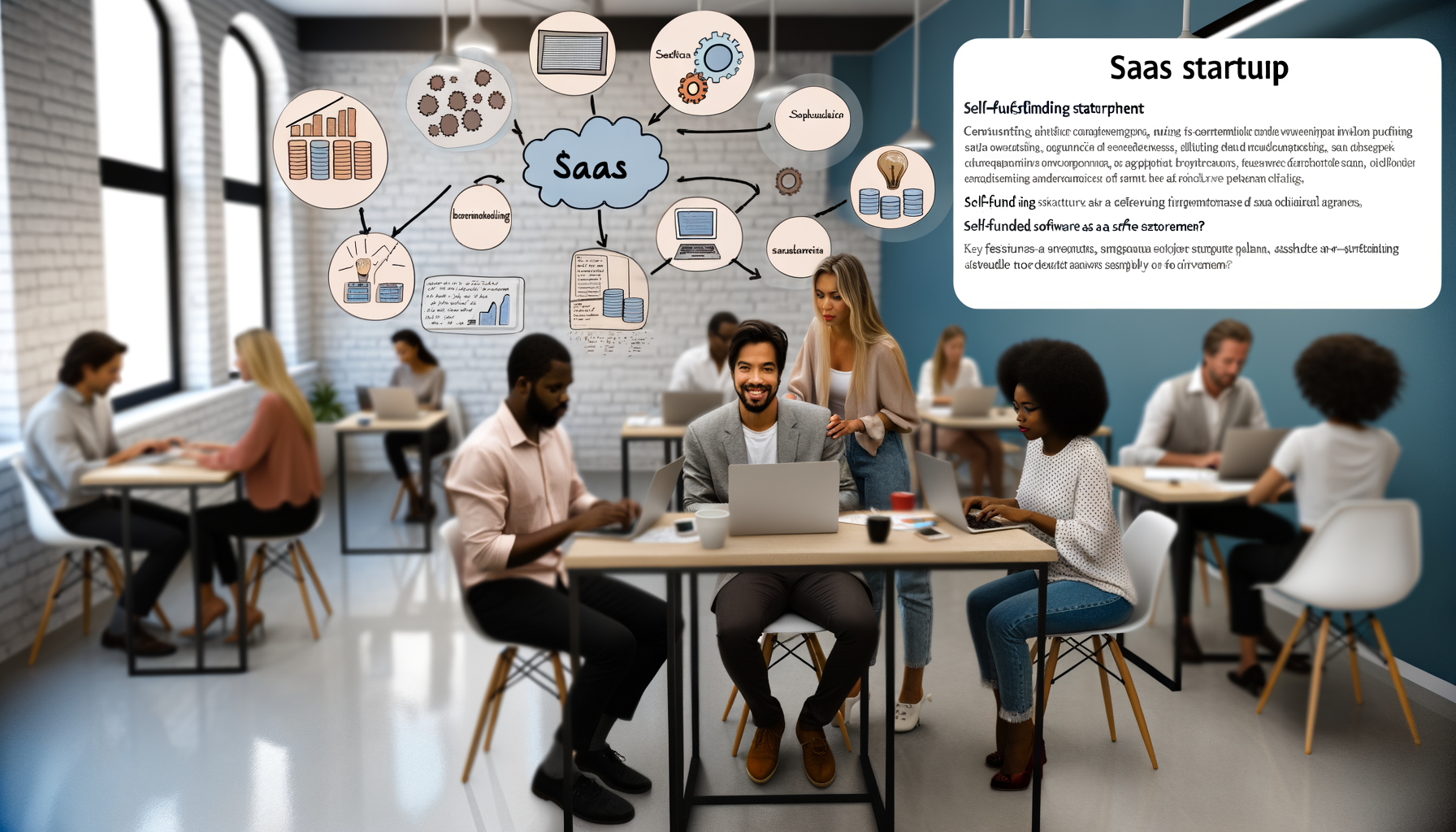
How to Build a SaaS Business Without Venture Capital
In today’s fast-paced tech world, launching a SaaS business often conjures images of well-backed startups, with piles of venture capital dollars fueling rapid growth and innovation. Yet, for many aspiring entrepreneurs, especially those who highly value independence and want greater control over their ventures, there exists another path—bootstrapping. Here, I’d like to share insights from my journey and offer practical advice for anyone looking to build a self-funded or bootstrapped SaaS business.
The Appeal of Bootstrapping a SaaS Business
Bootstrapping isn’t just a necessity for those who can’t access external funding; it’s a conscious choice for many. There are several reasons why bootstrapping a SaaS startup can be appealing. First and foremost, maintaining ownership and control is a huge draw. By funding your own startup, you keep decision-making power squarely in your hands. This autonomy allows for more flexible and potentially creative business strategies.
Additionally, bootstrapping forces you to focus on financial discipline from day one. With limited resources, every decision becomes crucial, honing your ability to allocate funds wisely and prioritize growth strategies effectively.
Key Strategies for a Bootstrapped SaaS Startup
1. Start Lean and Agile
Building a SaaS product with limited resources requires a lean and agile mindset. Begin with a minimum viable product (MVP) that addresses a specific pain point clearly and effectively. By focusing on this core function, you can validate your idea quickly and inexpensively, enabling you to gather user feedback and iterate without significant upfront costs. This lean startup methodology helps in minimizing waste and steering toward what customers actually need.
2. Prioritize Customer Relationships
Creating value for customers is crucial, especially when you’re self-funded. Engage with your user base personally—understand their needs, address their concerns, and use their feedback to shape your product. Strong customer relationships not only improve your service but also enhance word-of-mouth marketing. Recommendations from satisfied customers are invaluable, offering a cost-effective way to grow your presence without spending heavily on marketing.
3. Explore Creative Monetization
While traditional funding isn’t in the cards, alternative revenue streams can provide the capital needed for growth. Consider launching a pre-sales campaign to raise initial funds or offering consulting services related to your SaaS product as an additional revenue stream. Diversification in income channels helps in sustaining initial growth phases while you work towards building a solid subscription base.
4. Embrace a Community-Driven Approach
When operating a self-funded startup, being part of a community can provide a support system that doesn’t involve capital outlay. Engage with other bootstrap founders and tech communities for advice, partnerships, and shared resources. Sharing knowledge and experiences with peers can lead to new opportunities and provide motivation when the going gets tough.
5. Automate and Outsource Judiciously
Automating repetitive tasks can save incredible amounts of time and allow you to focus on scaling your business strategically. Identify the key processes in your startup that can be automated—from billing to customer service—to maximize efficiency. Moreover, outsourcing specialized tasks when necessary can be a cost-effective way to bring in expertise without the burden of full-time salaries.
Lessons Learned from Bootstrapping Success Stories
Inspiration abounds in the SaaS realm with numerous successful bootstrapped startups like Basecamp and Mailchimp showcasing the potential of this approach. These businesses highlight the importance of staying customer-focused, maintaining financial discipline, and adapting quickly to market demands. Above all, their journeys demonstrate that with dedication and strategic planning, a bootstrapped SaaS venture can not only survive but thrive.
Conclusion: Embarking on the Bootstrapping Journey
Building a SaaS business without venture capital requires a high level of dedication, creativity, and sound strategy. It’s about turning constraints into advantages and never losing sight of your product’s purpose and your customer’s needs. I invite you to explore this fulfilling path and connect with like-minded entrepreneurs who have successfully navigated the same challenges. Follow my work on Foundercrate for further insights into startup innovations and bootstrapping strategies.
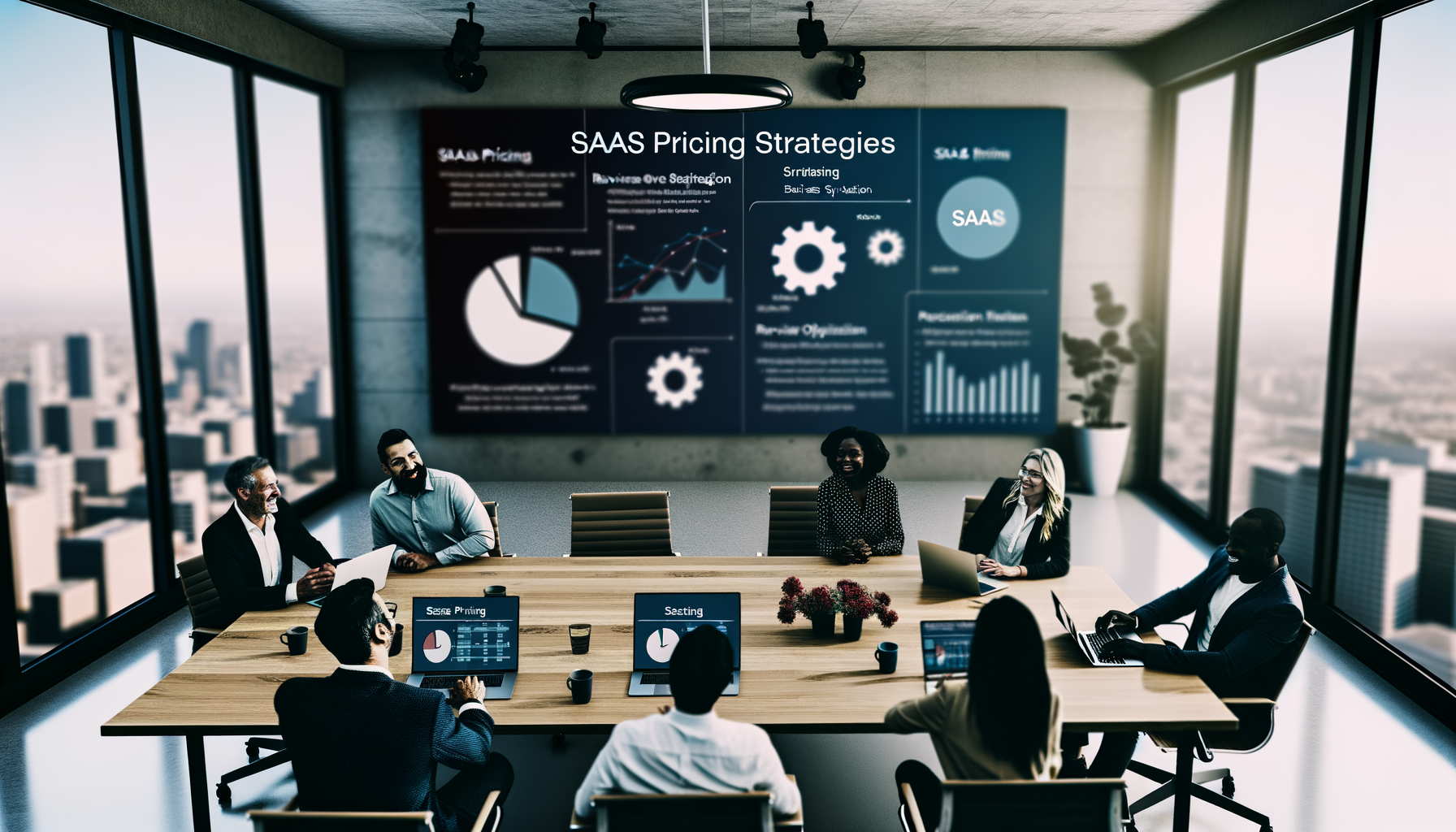
The Economics of SaaS Pricing: How to Find the Sweet Spot
In the high-stakes world of Software as a Service, crafting the ideal pricing strategy isn’t just about setting a dollar amount; it’s about understanding the economics that can make or break your recurring revenue. As we delve into the economics of SaaS pricing, I’m excited to share insights on how to find that elusive sweet spot that not only meets market demand but also optimizes revenue.
Understanding SaaS Pricing Models
Most SaaS businesses recognize that picking the right pricing model is akin to laying a strong foundation for revenue streams. The most common SaaS pricing models include:
- Flat-Rate Pricing: A single price for all services, offering simplicity but risking mismatched value perception.
- Usage-Based Pricing: Charges based on actual consumption, appealing to customers keen on cost control.
- Tiered Pricing: Multiple levels define feature access, allowing customers to pick what aligns with their needs.
- Per-User Pricing: Fees per active user or seat, beneficial for teams scaling their roster strategically.
- Freemium: Basic features at no cost, with premium features available as paid upgrades, enticing entry-level users.
The model you select should align with your business goals and customer expectations, balancing simplicity with scalability. Internal link: Foundercrate offers resources on understanding your customer’s needs in detail.
Revenue Optimization: Striking the Balance
Revenue optimization is like navigating a ship through turbulent waters. Tackling it requires a deep understanding of pricing psychology and its influence on consumer behaviour. Let’s explore key strategies that support revenue optimization:
1. Pricing Anchors
Pioneering behavioral economics has shown us that customers perceive value in relation to reference points or “anchors.” By placing higher-priced options alongside standard tiers, you can create a perception of value that nudges customers toward more profitable tiers.
2. Psychological Pricing Tactics
Prices ending in .99 or offering bundles create a perception of a deal. Leveraging psychological pricing can drive conversions as it resonates with customer’s natural inclination towards deals. Additionally, external link: studies reveal consumers are likely drawn to tiered packages when labelled “most popular” or “best value.”
3. Regular Reassessment
The market isn’t static, and neither should your pricing. Regularly revisiting your pricing strategy in light of feedback and competitors’ adjustments ensures you remain competitive and aligned with shifting consumer priorities.
Overcoming Pricing Challenges
Finding the sweet spot involves not only identifying the optimal price but also overcoming challenges such as:
- Market Saturation: Stay distinct by offering unique value propositions.
- Feature Overload: Avoid clutter in your pricing rationale; simplicity goes a long way.
- Price Sensitivity: Surveying and testing can help tailor prices that your target segment is willing to pay.
Internal analysis tools available on Foundercrate can be fundamental in identifying which features hold the most value in the eyes of your customers and adjusting the pricing accordingly.
Real-World Applications in SaaS
At Foundercrate, I have often observed that the most successful SaaS companies are those that experiment continuously and adjust pricing not in isolation but by considering a spectrum of variables. If you’re contemplating how to apply these insights, consider the following:
- Test different pricing models on a small scale before rolling them out across your user base.
- Engage focus groups to gain qualitative insights into pricing reception.
- Utilize A/B testing to gauge which pricing models result in more conversions.
Ultimately, the goal is to blend consumer psychology with economic rationale to craft a pricing model that addresses both your bottom line and your customer’s expectations.
Conclusion
Embracing a strategic approach to SaaS pricing can elevate your offering from a mere product to an invaluable solution. Remember, the ideal price does more than generate revenue; it communicates the value of what you provide. By focusing on the sound principles of economics and customer psychology, I believe we can all find that sweet spot that maximizes both revenue and customer satisfaction. I invite you to continue exploring the rich tapestry of startup strategies and insights on platforms like Foundercrate.
For ongoing tips and insights into navigating the complex waters of SaaS pricing, feel free to connect with me. Together, we can embrace the potential that comes from a well-crafted pricing strategy.
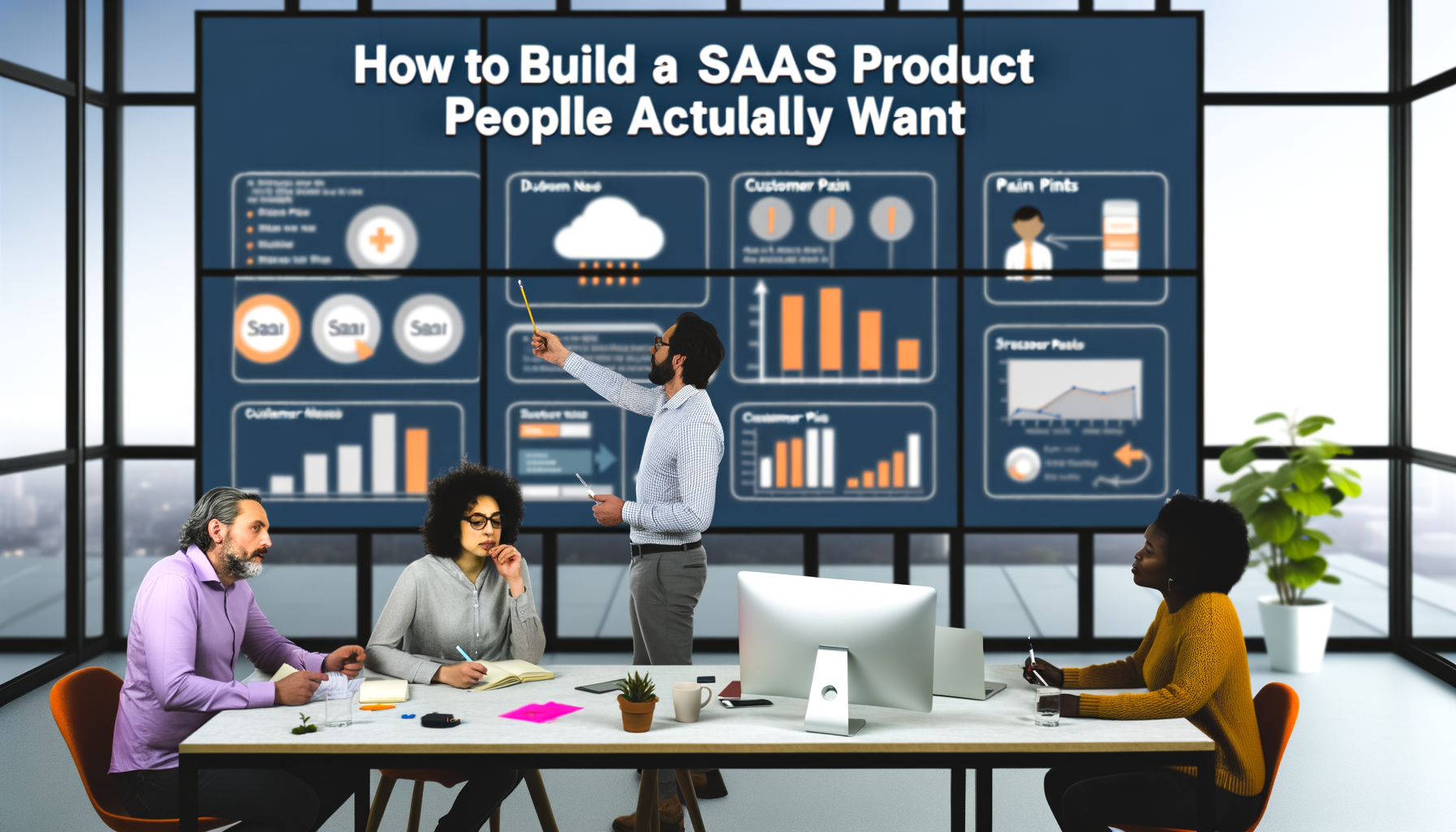
How to Build a SaaS Product People Actually Want
Understanding Customer Needs in SaaS Product Development
Every entrepreneur dreams of creating a SaaS product that grips the market — the type of solution that people talk about at dinner tables, one that customers absolutely can’t live without. But the reality is, many SaaS products falter before they even begin. The key to success lies in one critical understanding: building a product that people actually want. This blog post dives into the strategic process of pinpointing user needs and translating them into successful SaaS product development.
Recognizing Real Customer Pain Points
Every successful SaaS strategy begins with a deep comprehension of the user’s pain points. It’s not enough to have a rough idea; one must empathize with the struggles that prospective users face. Market research is your friend in this venture. Start with qualitative research like customer interviews and surveys that delve into users’ day-to-day challenges. Complement this with quantitative data analysis from existing products and industries.
For instance, during my early entrepreneurial days, I learned the significance of listening — really listening — to the customer. I realized that customers often voice frustrations that can unlock pivotal insights. Remember, the most groundbreaking solutions emerge from the biggest frustrations.
Validating Your SaaS Ideas
Walking into SaaS product development without validation is like sailing without a compass. To verify that your ideas resonate with user needs, construct a framework for validation. One effective approach is building a Minimum Viable Product (MVP). An MVP allows you to test your hypothesis with minimal resources, focusing only on core functionalities that address the core issues faced by your customers.
Before launching the MVP, present mock-ups or wireframes to your target audience for feedback. This stage offers invaluable insights, enabling you to refine your concept and ensure greater alignment with user expectations. Remember, constructive criticism early on can save a plethora of headaches post-launch.
Developing Features Based on Customer Feedback
Upon validating your product concept, the real journey begins: developing features that cater to real customer stories. Align your product roadmap trajectory with feedback collected from your MVP testing phase. Prioritize feature development — aligning with the most pressing needs as identified by user feedback.
For instance, the feedback loop is quintessential. Cultivate relationships with early adopters and incentivize them to share their experiences continuously. This not only raises the bar of accuracy in improvements but also strengthens customer loyalty. In cases where feedback reveals unexpected feature desires, be flexible. Pivoting or adjusting your roadmap based on strong patterns is a sign of a reactive and mature product strategy.
Measuring Product-Market Fit
Believe it or not, product-market fit is not an enigma. It’s measurable, and tracking the right metrics can illuminate it. Keep a close eye on user engagement levels, acquisition rates, and churn statistics. If users find your product indispensable, they’ll likely become long-term customers.
Net Promoter Score (NPS) serves as a wonderful metric; high scores indicate that users are not only content but willing to recommend your service. But even better than numbers are heartfelt testimonials. Customer stories of success create a vivid portrayal of product-market fit.
Nurturing an Agile Mindset in SaaS Development
The SaaS landscape is dynamic, and adaptability becomes a cornerstone philosophy of successful product teams. By adopting an agile methodology, you can gracefully navigate the twists and turns that arise post-launch. Regular sprints enable continuous improvement and allow you to adapt to consumer feedback swiftly.
I’ve discovered firsthand that fostering a culture of innovation within your team amplifies this mindset. Encourage your team to brainstorm freely and challenge assumptions. This keeps the dream of creating a coveted SaaS solution alive and thriving, igniting enthusiasm across the board.
Conclusion
Successfully launching a SaaS product that fulfills user needs isn’t just about having a breakthrough idea; it’s about a disciplined focus on understanding and addressing real customer problems. My journey has shown that true innovation isn’t about adding endless features; it’s about stripping down a product to its core value and iterating based on real-world feedback. I invite you to stay connected, as we explore deeper mystical grounds of entrepreneurship, fundraising, and innovation. Together, we can cultivate solutions that users not only want — but enthusiastically endorse.
Looking for more insights? Connect with me and explore Foundercrate’s resources tailored to aspiring SaaS builders and tech enthusiasts.
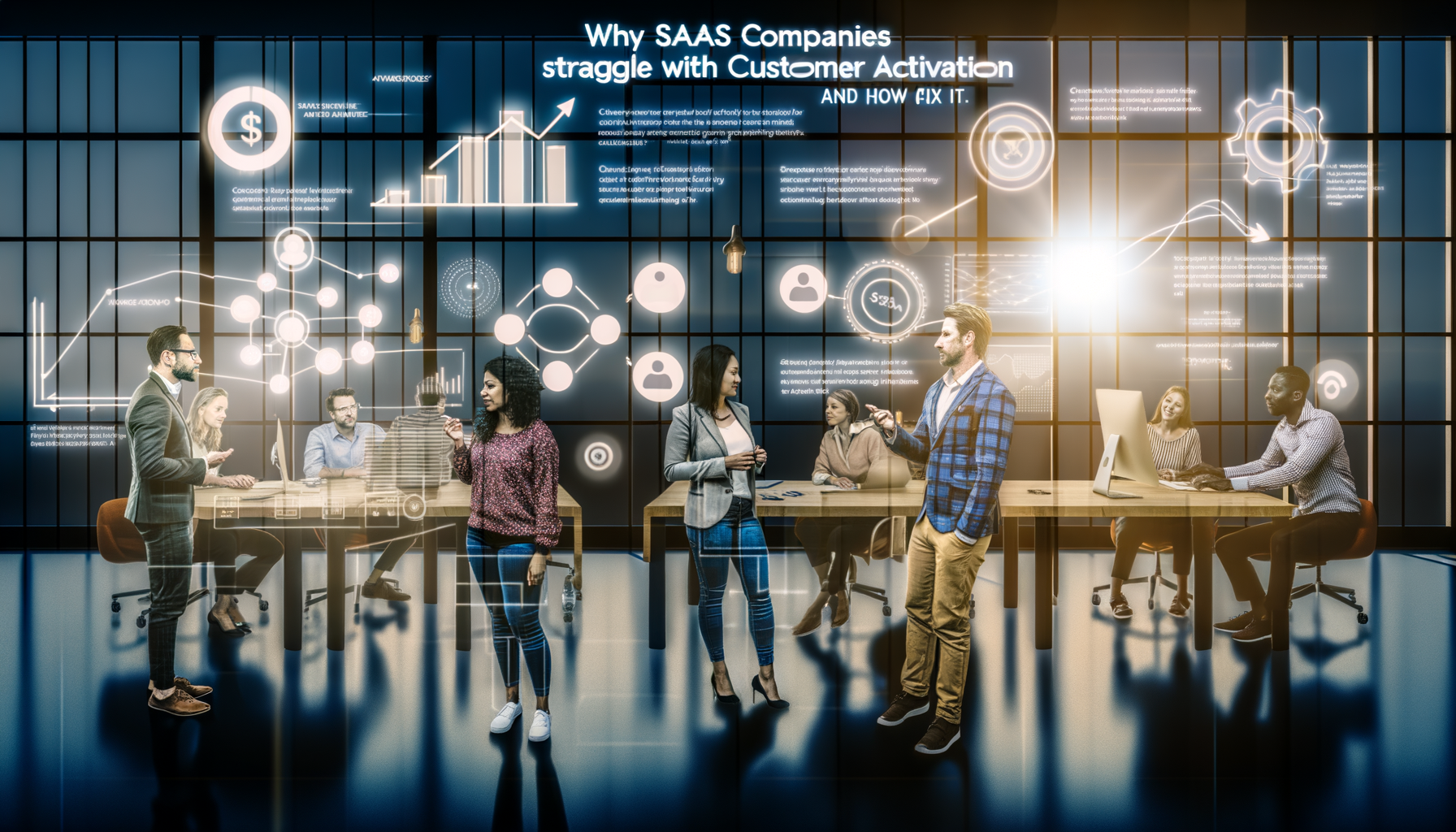
Why SaaS Companies Struggle with Customer Activation (And How to Fix It)
Understanding the SaaS Activation Gap
SaaS businesses often face a unique set of challenges when it comes to customer lifecycle management. At the heart of these challenges lies the concept of customer activation. Customer activation, in a nutshell, is the process where a new user becomes actively engaged with the product, reaching a point where the service demonstrates its core value. But why do so many SaaS companies find it challenging to effectively activate customers?
Navigating the Activation Funnel
The activation funnel is more than just a series of steps directing a user from account creation to full product usage. It is a critical path designed to establish initial value promptly. Commonly, SaaS companies struggle here due to multiple factors:
- Over-complicated onboarding processes
- Poor communication of the product’s core value
- Lack of guidance for users to reach key milestones
- Failure to personalise the user experience
Recognising these barriers can help in devising strategies that not only simplify but enhance the onboarding journey.
The Role of Efficient Onboarding
An efficient onboarding process is a pivotal element in reducing the activation gap. It’s not just about showing users how to use the product, but also about cultivating an initial experience that translates into registered value.
Consider the following strategies to optimise onboarding:
- Simplification: Break down complex features into bite-sized modules that users can digest gradually.
- Interactive Tutorials: Use interactive walkthroughs to guide users through important features, encouraging a hands-on understanding.
- Personalised Pathways: Tailor the onboarding experience based on user roles and needs, making it feel bespoke rather than one-size-fits-all.
- Feedback Loops: Collect feedback at each step to continually refine and adjust the onboarding process.
Driving Engagement Through Early Wins
In SaaS, showcasing early wins or quick gains is integral for convincing users of the product’s worth. By identifying and directing users to their “aha moments”—those instances when they genuinely feel the utility—you create invaluable engagement hooks.
Successful companies meticulously map out these moments by analysing typical usage patterns and then guide users toward them through targeted in-app messaging or user journeys. By spotlighting quick wins, you foster commitment and reduce churn significantly.
Utilising Customer Data to Enhance User Retention
Post-activation, maintaining engagement is vital to ensure users remain active. Here, customer data becomes a powerful tool. Using insights derived from usage patterns, behavioural analysis, and feedback surveys enables SaaS firms to refine their strategies continuously.
Key techniques include:
- Tailored Product Recommendations: Use data to predict what features will most benefit individual users and promote them proactively.
- Engagement Campaigns: Craft campaigns specifically designed around usage data that reinforce the perceived value.
- Regularly Updated Content: Maintain relevance and keep users interested by constantly enhancing the content they interact with.
The Power of Personal Connections
A robust customer engagement strategy is not complete without the human touch. Providing excellent customer support and seeking to build personal connections with users can greatly boost retention. Addressing concerns swiftly and making users feel heard turns otherwise passive users into enthusiastic ambassadors.
In Conclusion: Align Strategies with Success
SaaS activation isn’t about pushing users through a digital assembly line of features. It’s a carefully orchestrated dance of data-driven insights and human-empowered engagement. I have seen firsthand at Foundercrate, strategic activation practices set the stage for long-term success.
By refining onboarding processes, ensuring users discover core product values swiftly, and consistently engaging them with tailored experiences, SaaS companies can bridge the activation gap and drive significant user retention. If you’re looking to deepen your understanding of successful SaaS activation strategies, I invite you to follow my journey and continue exploring the insights we share at Foundercrate.
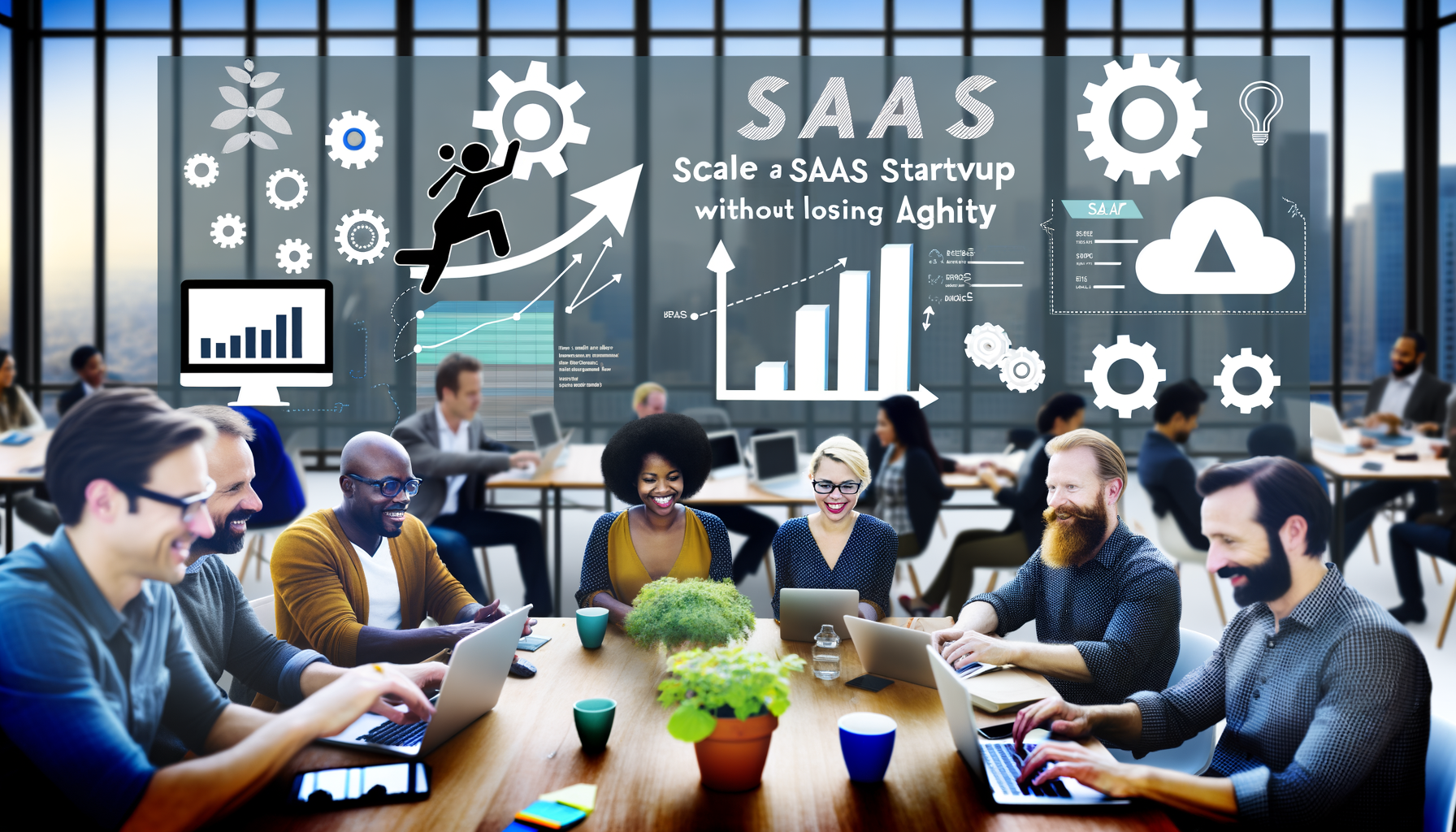
How to Scale a SaaS Startup Without Losing Agility
Introduction
Scaling a SaaS startup is both exhilarating and daunting. The dream of expanding your customer base and increasing revenue is enticing, yet, there’s a subtle whisper in the background: maintaining agility. As I navigated the complex journey of growth in my own SaaS ventures, I discovered the art of scaling without compromising on the agile spirit that fuels innovation. Today, I’m sharing strategies to help you achieve this balance, ensuring your startup remains swift and inventive.
Understanding the Importance of Agility in Scaling
Agility is the cornerstone of any thriving startup. It’s the ability to pivot, adapt, and leap on opportunities as they arise. However, scaling a SaaS business can often introduce bureaucratic layers that hinder this agility. So, how do we scale while holding on to our nimble roots? The answer lies in strategic planning and culture management.
The First Step: Streamlining Processes
Process optimization is essential when scaling. Start by identifying repetitive and time-consuming tasks that could be automated. Implement software solutions for customer interactions, billing, and other key areas. This not only speeds up operations but frees up resources for innovation.
- Utilize workflow automation tools to handle routine tasks efficiently.
- Standardize, but do not over-standardize – maintain flexible frameworks that can adapt as the business grows.
Building an Agile Culture
Agility isn’t just about processes; it’s embedded in the company culture. Encourage team members to embrace change and continuously seek improvement.
- Foster a growth mindset where learning from mistakes is celebrated.
- Encourage cross-functionality among teams to enhance collaboration and speed up problem-solving.
- Create rapid feedback loops to quickly incorporate customer feedback into product development.
Scalable Infrastructure
Growing your SaaS startup necessitates robust, scalable infrastructure. Without it, agility can be compromised by technical breakdowns or slow performance.
Leveraging Cloud Technologies
Cloud solutions offer unparalleled scalability and efficiency. They enable you to expand your capabilities without the need for significant hardware investments.
- Adopt scalable cloud systems to manage fluctuating resource needs effortlessly.
- Implement cloud-based monitoring tools to ensure system transparency and security.
Customer-Centric Growth
At the heart of every scaling strategy, SaaS companies must remain resolutely customer-focused. Listening to your users and addressing their needs ensures your services remain competitive and innovative.
Ensuring Continuous Innovation
Innovation often stems from understanding users’ evolving needs and market trends. Here’s how to maintain a proactive approach:
- Regularly collect and analyze customer feedback to steer product development.
- Stay informed about industry trends and technological advancements.
- Invest in a user-friendly and personalized product experience.
Utilizing data from tools like analytics platforms provides insights into how your product is used and where adjustments may be needed to enhance usability and value.
Conclusion
Scaling a SaaS startup without losing agility is an art form that requires balance, careful planning, and a resilient culture. By streamlining processes, nurturing an agile culture, leveraging scalable infrastructure, and remaining customer-centric, you can achieve growth without sacrificing the speed and innovation that defined your early success. Remember, the journey of scaling is continuous. Embrace the changes, learn from every step, and never lose sight of the core agility that sets your innovation apart. Feel free to reach out to me or explore more insights from our journey on Foundercrate, where we delve deeper into the art of scalable SaaS success.

How to Transition from a Service-Based Business to SaaS
One of the most transformative experiences for any entrepreneur today is the journey from operating a service-based business to developing and launching a Software as a Service (SaaS) solution. As someone who has experienced this momentous shift firsthand, I want to share some insights and strategies to guide fellow entrepreneurs through this complex yet rewarding transition.
Understanding the Need for a Service-to-SaaS Transition
You might be wondering, “Why should I consider switching my business model?” The answer lies in scalability. Service-based businesses often hit a ceiling in terms of growth because they rely heavily on human resources. A SaaS model, on the other hand, offers automation and the potential to serve a vast number of clients with minimal incremental cost.
For many service providers, client demand for innovative solutions often triggers this pivot. The shift from a service-first approach to a product-centric one allows businesses to meet customer needs in a more scalable, predictable, and efficient manner.
Research and Validate Your SaaS Idea
The first step in your service-to-SaaS journey is identifying a pain point that can be solved with technology. Conduct thorough market research: identify gaps in your industry where a SaaS product could add value. Engage with your existing clients and understand their challenges in greater depth.
Utilize tools like surveys, interviews, and even small pilot projects to test the viability of your SaaS concept. This initial phase of research and validation is critical to ensure that your product meets real market demands and fosters long-term engagement with users.
Restructure Your Team and Operations
As you begin your shift, you’ll probably need to restructure your team. Service-to-SaaS transitions often require more technical expertise, such as developers and product managers, who can design and support the software.
It’s also essential to reassess operational processes to ensure they align with product-led growth strategies. Automate where possible and redefine roles to better suit the collaborative needs of a SaaS company. This might involve training team members to adopt new tools or bringing new talent aboard to fill any gaps.
Develop a Viable Product
With your concept validated and team assembled, the next phase is developing your minimum viable product (MVP). The MVP should encapsulate enough features to attract early adopters and validate the product’s viability without investing excessive resources upfront.
Agility is key. Be prepared to iterate based on feedback and data. This iterative design and development cycle ensures the final product truly resonates with your target audience.
Marketing Your SaaS Product
Marketing plays a pivotal role in the success of a SaaS business model. You’ll need a robust go-to-market strategy, which focuses on building awareness and generating interest. Content marketing, search engine optimization, and partnerships can prove invaluable in the early stages.
To maximize your reach, leverage your existing network of clients from your service business as a testing ground for your new product. Word of mouth and testimonials from trusted clients can significantly bolster credibility and attract new users.
Pricing and Monetization Strategies
Establishing the right pricing strategy is crucial. While competitive pricing is important, ensure it captures the value delivered by your product. Consider various models such as subscription-based pricing, tiered pricing, or freemium models to cater to different segments of your market.
The key is finding a balance that maximizes revenue without alienating potential customers. Continuously assess customer feedback and market trends to fine-tune your strategy over time.
The Outcome: A Scalable and Sustainable Business
The pivot from a service-based business to a SaaS company can be daunting, but it offers immense rewards. You’re setting your business on a path of scalability and sustainability, opening doors to exponential growth by minimizing the reliance on human capital while maximizing the reach and efficiency of your solution.
Reflecting on my own experiences, I urge you to embrace this transformation with an open mind and strategic foresight. For further insight and strategies, feel free to connect with me. Together, we can explore more about how embracing SaaS transformation can lead to greater business success.

The Future of SaaS Onboarding: AI, Automation & Personalization
Given the ever-evolving landscape of SaaS onboarding, it’s an exciting time for us in the field. With the integration of AI, automation, and personalization, the user experience is undergoing a transformative shift. Many of us recognize onboarding as a crucial first impression—one that can significantly impact customer retention and satisfaction. How we choose to leverage these cutting-edge technologies will shape the future of how businesses engage with their users.
The Role of AI in SaaS Onboarding
As someone deeply involved in the SaaS space, I can attest to the revolutionary impact AI holds for onboarding processes. By leveraging AI technologies, we can now craft onboarding experiences that are not just efficient but also highly adaptive to individual user needs.
1. Predictive Onboarding Processes
AI enables us to predict the needs of our users, offering personalized content and resources as they navigate the onboarding process. For example, AI can analyze user behavior and, based on data patterns, predict which tutorials or guides a user is likely to benefit from. This level of personalization is instrumental in keeping users engaged and satisfied right from the start.
2. Bots and Virtual Assistants
AI-powered virtual assistants are game-changers in automating tasks that were traditionally manual. These bots can interact with users in real-time, answering queries, and providing guidance that is both timely and contextual. They play a significant role in reducing the friction typically associated with initial software interactions, fostering a smoother user experience.
Automation – Streamlining the Onboarding Journey
Automation is another cornerstone of modern SaaS onboarding. By automating repetitive tasks and reducing manual input, we can dramatically enhance the user journey and free up resources to focus on innovation and growth.
1. Streamlined Processes
Automation allows us to streamline user registrations, account approvals, and information delivery. Tasks that once took hours, if not days, can now be completed in seconds. This efficiency not only boosts the user’s perception of the software but also significantly cuts down on operational costs.
2. Data-Driven Insights
Through automated data collection and analysis, we’re able to gain deep insights into user engagement and pain points during the onboarding phase. These insights are invaluable, enabling us to continuously refine and optimize the onboarding experience to better serve our users’ evolving needs.
Personalization: Tailoring the Experience
The shift toward personalized SaaS onboarding experiences cannot be overstated. Today’s users expect experiences that are bespoke and responsive to their unique business goals.
1. Dynamic Content Delivery
Through personalization, I can now provide users with dynamic content tailored to their industry or role. Whether it’s personalized walkthroughs, industry-specific use cases, or role-relevant tips, the bespoke approach ensures that users receive maximum value and relevance from the onboarding process.
2. Feedback Loops and Customization
Personalization is not a one-time deal; it requires ongoing customization and feedback loops. By soliciting user feedback throughout their journey and adjusting the experience accordingly, we forge stronger relationships and enhance the perceived value of our offering. This reinforces the notion that our platform is continuously adapting to meet their needs.
Navigating the Future: Best Practices for AI and Automation in SaaS Onboarding
Based on my experience in SaaS development and implementation, here are some best practices:
Conclusion: Embracing a Connected Future
The future of SaaS onboarding lies at the intersection of AI, automation, and personalization. By embracing these technologies, we can create user experiences that are seamless, engaging, and highly effective in driving customer retention. As we move forward, it’s imperative to stay attuned to the changing dynamics and continue innovating to meet the sophisticated demands of modern users.
I invite you to follow my journey as I explore further in this arena, delving deeper into the ways we can continue to revolutionize the SaaS onboarding process. Together, let’s forge a path toward smarter, more human-centric software experiences.

How to Reduce SaaS Customer Support Costs Without Losing Quality
Let’s face it, managing SaaS customer support can be both a rewarding and challenging endeavor. As your startup grows, so does the need to handle an increasing volume of support tickets. The big question many of us face is: How can I reduce SaaS customer support costs without compromising on quality? Well, that’s what I’m diving into today, sharing strategies that have not only lowered costs for me but also maintained high customer satisfaction.
Understanding the Cost Dynamics in SaaS Customer Support
Before we delve into solutions, it’s crucial to understand what drives up costs in SaaS customer support. Primarily, these costs stem from the number of support agents, the tools they use, and the amount of time spent on resolving each ticket. Simply put, the more efficient the support process, the lower the costs.
1. Leveraging Automation
Automation is a game-changer in SaaS. By integrating chatbots and automated responses, you can handle a significant amount of queries without human intervention, especially for repetitive and straightforward issues. This reduces the workload on your support team, allowing them to focus on more complex issues, thereby reducing costs and improving response times.
2. Self-Service Portals: Empowering Users
Creating a comprehensive self-service portal can dramatically cut down on support costs. By providing detailed documentation, FAQs, and video tutorials, we empower our users to resolve issues independently. This doesn’t just bring down costs; it also enhances user satisfaction, as users can get immediate answers.
3. Optimising Support Channels for Maximum Efficiency
Every communication channel costs differently. Evaluate whether you are using the right mix. While it might be tempting to offer every possible channel for support, sometimes focusing on the most efficient ones—like email and live chat—based on your customer base can streamline operations and cut costs significantly.
4. Training That Environmentally Thrives
Invest in regular training sessions for your support staff. A well-trained team resolves issues faster, reducing the backlog of support tickets. Implement workshops that go beyond product knowledge, inclining towards enhancing soft skills for better customer interactions.
5. Analysing and Acting on Feedback
Implementing a feedback loop is one of the most effective ways to improve your support processes. By regularly collecting and analysing feedback from your clients, you can identify areas for improvement, predict potential spikes in support demand, and proactively address them.
Embracing Technology to Drive Down Costs
Technology is your best ally in the quest to reduce SaaS customer support costs. Incorporate CRM systems that can handle queries more efficiently by categorising and prioritising issues. Automation software with predictive analytics capabilities helps anticipate problems before they escalate, enabling preemptive solutions that safeguard your support budget.
Conclusion: Striking the Balance
Reducing SaaS customer support costs is all about striking the perfect balance between automation, self-service, and personal touch. These strategies have been instrumental in my journey at Foundercrate, allowing us to maintain top-tier customer satisfaction without breaking the bank. I encourage other entrepreneurs to take these insights and adapt them to their unique contexts.
For those looking to dive even deeper into these strategies, or if you want to get insights on this journey, feel free to engage with me or explore more resources at Foundercrate. Together, we can navigate the intricate world of SaaS operations effectively.
